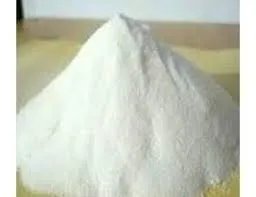
Oct . 13, 2024 15:26 Back to list
Exploring HPMC Powder Applications in Pharmaceuticals and Other Industries
Understanding HPMC Powder Applications, Benefits, and Considerations
Hydroxypropyl Methylcellulose (HPMC) is a non-ionic, water-soluble polymer derived from cellulose. It has gained significant attention in various industries due to its unique properties, such as water retention, film-forming capabilities, and thixotropic behavior. As a result, HPMC powder has found its place in sectors like pharmaceuticals, construction, food, and cosmetics.
Chemical Structure and Properties
HPMC is created by introducing hydroxypropyl and methyl groups into the cellulose molecule. This modification enhances the solubility of cellulose in water and improves its thermal gelation properties. The degree of substitution of hydroxypropyl and methyl groups can vary, leading to different grades of HPMC that exhibit distinct physical and chemical characteristics.
One of the key attributes of HPMC is its ability to form a gel or viscous solution when mixed with water. This property is particularly beneficial in applications requiring thickening agents or stabilizers. Additionally, HPMC is resistant to heat and acids, making it stable in a variety of environments.
Applications in Pharmaceuticals
In the pharmaceutical industry, HPMC powder is widely used as a binder in tablet formulation and as a coating agent. Its film-forming properties allow for the creation of protective layers around tablets, which enhances the stability and release profile of active pharmaceutical ingredients (APIs). Moreover, HPMC has been utilized in controlled-release formulations, allowing for the prolonged release of medication into the bloodstream.
Another important application is in the preparation of ointments and gels. HPMC acts as a suitable matrix that ensures even distribution of active ingredients, enhancing the efficacy of topical applications. Additionally, its biocompatibility makes it a favorable choice in drug delivery systems.
Role in Construction and Building Materials
The construction industry also benefits from the unique properties of HPMC. It is commonly used as an additive in cement-based products like tile adhesives, joint fillers, and plaster. The inclusion of HPMC improves workability, adhesion, and water retention in cement mixtures, which is essential for ensuring optimal performance during construction. The thixotropic nature of HPMC allows for easier application and control during the setting phase.
hpmc powder

Moreover, HPMC enhances the resistance of mortars to sagging, ensuring that they stay in place once applied. This quality is particularly important in vertical applications, such as wall tiles, where products need to maintain their position during the curing process.
Food and Culinary Uses
In the food industry, HPMC serves as an emulsifier, thickener, and stabilizer. It can improve the textural properties of various food products, making them more appealing to consumers. For example, it is often added to sauces, dressings, and baked goods to enhance viscosity and shelf-life.
Additionally, HPMC is utilized in gluten-free and low-fat products, where it can replace traditional binding agents. Its versatility allows for clean label formulations, as it is a naturally derived ingredient that aligns with the growing trend toward healthier, more transparent food options.
Cosmetics and Personal Care Products
HPMC's film-forming and thickening properties render it valuable in the cosmetics and personal care sector. It is commonly found in lotions, creams, shampoos, and conditioners, where it helps to achieve the desired texture and consistency. Furthermore, HPMC can enhance the moisturizing properties of products and improve their stability during storage.
Considerations and Conclusion
While HPMC offers numerous benefits across various applications, it is essential to consider the potential drawbacks. The rheological properties of HPMC can be influenced by temperature and pH variations, which may affect its performance in specific formulations. Moreover, the choice of HPMC grade must align with the intended application to achieve optimal results.
In conclusion, HPMC powder is a versatile material that has established itself as a vital ingredient in multiple industries, including pharmaceuticals, construction, food, and cosmetics. Its unique properties provide excellent benefits, making it a preferred choice for formulators and manufacturers. As innovation continues to evolve, it is expected that new applications for HPMC will emerge, further highlighting its importance in modern products. Understanding and optimizing HPMC in various formulations will allow industries to leverage its full potential for superior performance and consumer satisfaction.
-
Versatile Hpmc Uses in Different Industries
NewsJun.19,2025
-
Redispersible Powder's Role in Enhancing Durability of Construction Products
NewsJun.19,2025
-
Hydroxyethyl Cellulose Applications Driving Green Industrial Processes
NewsJun.19,2025
-
Exploring Different Redispersible Polymer Powder
NewsJun.19,2025
-
Choosing the Right Mortar Bonding Agent
NewsJun.19,2025
-
Applications and Significance of China Hpmc in Modern Industries
NewsJun.19,2025







